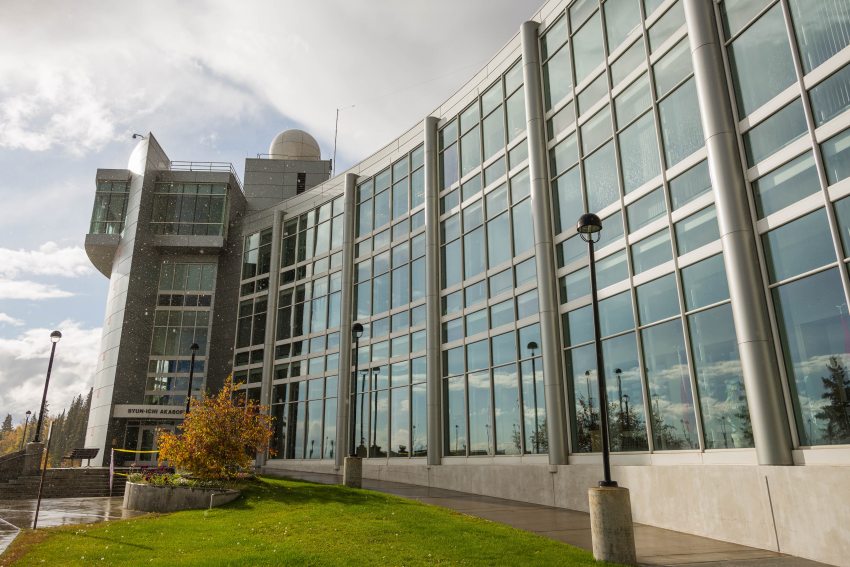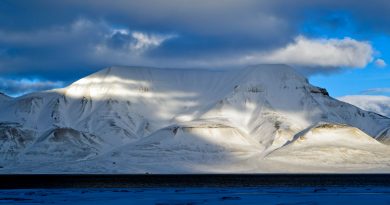1,000 experts converge in Alaska for Arctic events

You could call it Arctic-Palooza.
About 1,000 scientists, policymakers, business managers, students and others interested in the Arctic are set to converge in Fairbanks for a weeklong series of high-profile meetings and public events.
The meetings began this weekend and will be held more or less simultaneously, mostly at the University of Alaska Fairbanks campus. They range from the semiannual gathering of top-level foreign ministry officials who carry out business for the Arctic Council to nuts-and-bolts strategy sessions for scientists studying permafrost, marine issues and wildlife to family-friendly Arctic-themed public events like art exhibits, a film festival and a 5-kilometer fun run.
The gathering combines the Arctic Science Summit Week, an annual meeting of researchers from various international institutions, with the semiannual meeting of the Senior Arctic Officials, or SAOs, from the eight Arctic Council nations and with other events.
“It’s the biggest Arctic event taking place in Alaska this year,” said Nils Andreassen, executive director of the Anchorage-based Institute of the North. “Between the 500 or so researchers from around the world, the 100-plus Arctic Council delegations, the Model Arctic Council and the Alaskans in the room, it’s a fairly significant platform for the exchange of research information” and cross-cultural ideas, he said.
And it’s definitely one of the biggest events to be staged at UAF, said Kristin Timm, community and outreach coordinator for the Arctic Science Summit Week and a member of the local organizing committee created for the event.
“I don’t think that there has been anything like this in Fairbanks before,” said Timm, who is based with the Scenarios Network for Alaska and Arctic Planning at UAF’s Alaska Climate Science Center.
Focus: Science
Registered attendees come from 30 countries, with the bulk attending the Arctic Science Summit Week and the related Arctic Observing Summit.
The Arctic Science Summit Week draws high-level scientists and other officials from organization like the National Science Foundation and U.S. Polar Research Board to set research priorities and coordinate work, Timm said. It is not a conference where research is presented.
The Arctic Observing summit, meanwhile, is focused on coordinating data collection so measurements and observations are more consistent across international borders.
This will be only the third Arctic Observing Summit ever held. The previous summit was held in 2014 in Helsinki, also alongside that year’s Arctic Science Summit Week.
Arctic Council meeting
The Fairbanks Arctic Council meeting will be the second Alaska meeting of the SAOs since the U.S. began its two-year chairmanship of the group last year. SAOs typically meet every six months and last met in September in Anchorage.
The Arctic Council’s specialized committees and working groups will also meet in Fairbanks. Among the business they’ll consider is an effort to build a circumpolar northwide system of community observers similar to the Alaska Native Tribal Health Consortium’s Local Environmental Observer network. Indigenous issues will be in the spotlight as well, with a board meeting of the Indigenous Peoples Secretariat scheduled on Sunday.
The upcoming meeting is “a terrific opportunity for the Arctic governments and indigenous representatives to take stock of the U.S. chairmanship, which is nearing its mid-point, and to consider the future directions that we want the Arctic Council to take,” David Balton, a State Department deputy assistant secretary who serves as the council’s SAO chairman, said in a statement released by the council.
Bridging science and policy
The Fairbanks gathering also includes the first full meeting of the Model Arctic Council, a program allowing university students to simulate the work of the council and the organizations that participate in it, including indigenous organizations. Seventy graduate and undergraduate students are scheduled to participate, and they will be acting out what would be a full ministerial meeting of the Arctic Council, an event held every two years, Timm said.
Besides the formal science and policy meetings, there are about 50 side events scheduled, the biggest of which is the UAF-coordinated International Arctic Assembly, a meeting focusing on bridging Arctic science and policy.
An important aspect to the Arctic Science Summit Week and its associated meetings is public participation, Timm said.
The host committee wanted to make sure Fairbanks residents and other Alaskans would have a chance to get involved, so the agenda includes numerous tours, lectures, exhibits and hand-on museum events — many free of charge. Those include events suitable even for young children, like an Arctic-themed family game night at UAF’s fine arts complex.
“I think there’s a little bit of something for everybody in the community,” Timm said.
Related stories from around the North:
Canada: Discussions underway on who can claim Arctic seabed, Radio Canada International
Greenland: Landmark UCLA study reveals melting of Greenland ice sheet from top to bottom, Blog by Mia Bennett
Iceland: Acid Arctic Ocean and Russell Brand?, by Deutsche Welle’s Iceblogger
Norway: Emissions speeding up Arctic Ocean acidification, Alaska Dispatch
Russia: Ice-based Arctic research station in jeopardy: Chilingarov, The Independent Barents Observer
Sweden: Sweden developes new space strategy, Radio Sweden
United States: Better technology stretches Arctic Alaska’s shrinking tundra travel season, Alaska Dispatch News



